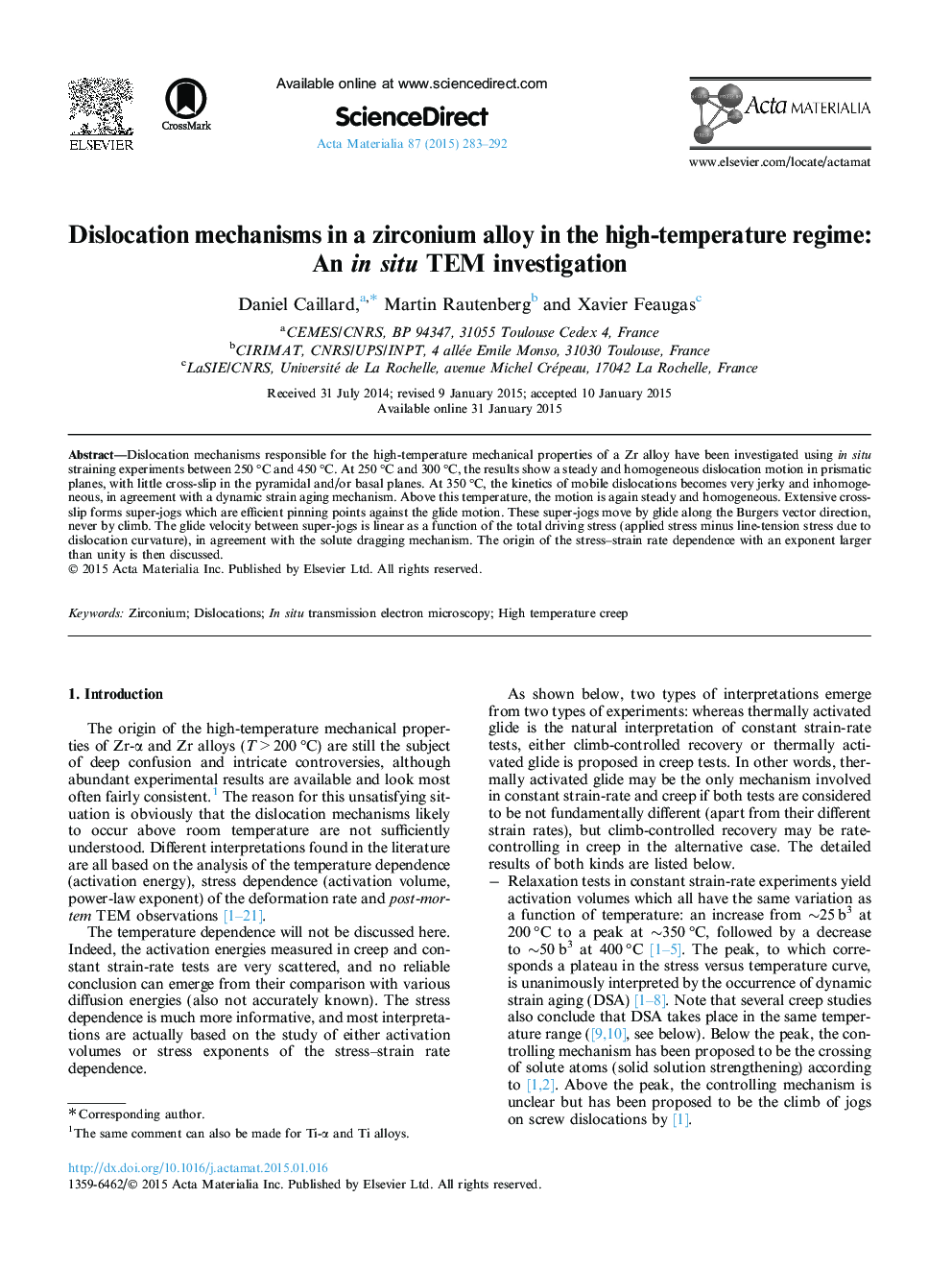| Article ID | Journal | Published Year | Pages | File Type |
|---|---|---|---|---|
| 7880668 | Acta Materialia | 2015 | 10 Pages |
Abstract
Dislocation mechanisms responsible for the high-temperature mechanical properties of a Zr alloy have been investigated using in situ straining experiments between 250 °C and 450 °C. At 250 °C and 300 °C, the results show a steady and homogeneous dislocation motion in prismatic planes, with little cross-slip in the pyramidal and/or basal planes. At 350 °C, the kinetics of mobile dislocations becomes very jerky and inhomogeneous, in agreement with a dynamic strain aging mechanism. Above this temperature, the motion is again steady and homogeneous. Extensive cross-slip forms super-jogs which are efficient pinning points against the glide motion. These super-jogs move by glide along the Burgers vector direction, never by climb. The glide velocity between super-jogs is linear as a function of the total driving stress (applied stress minus line-tension stress due to dislocation curvature), in agreement with the solute dragging mechanism. The origin of the stress-strain rate dependence with an exponent larger than unity is then discussed.
Related Topics
Physical Sciences and Engineering
Materials Science
Ceramics and Composites
Authors
Daniel Caillard, Martin Rautenberg, Xavier Feaugas,
